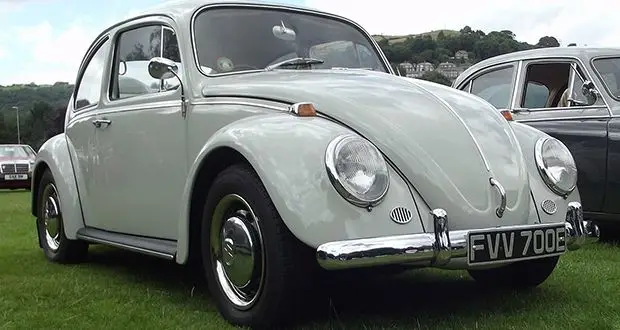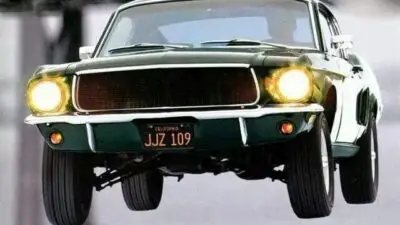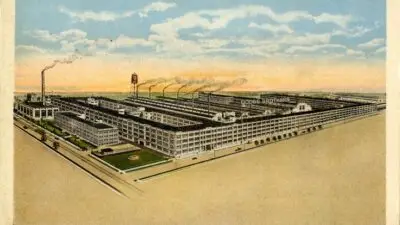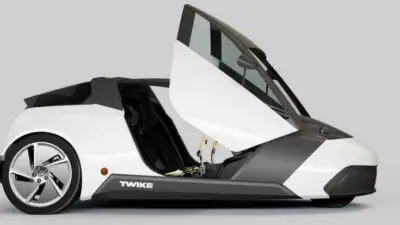The story of Volkswagen begins with a controversial origin that few car enthusiasts fully appreciate. In 1934, the company was established as part of a Nazi prestige project when Ferdinand Porsche was commissioned to design a “people’s car” that ordinary German families could afford. What started as a failed political project would eventually transform into one of the world’s most successful automotive companies, demonstrating how a brand can evolve beyond its troubling beginnings.

The foundation stone for the Volkswagen Works was laid near Fallersleben in 1938 at a ceremony attended by Nazi officials. However, before any civilians could purchase the new “Beetle,” World War II began, and the factory was integrated into the German war economy. After the war, Volkswagen would rise from the ashes of defeat to become an unlikely symbol of German economic recovery and eventually a global automotive powerhouse.
Key Takeaways
- Volkswagen originated as a Nazi Germany project before evolving into a global automotive leader despite its controversial beginnings.
- The iconic Beetle, initially designed as an affordable “people’s car,” became a cultural symbol across multiple countries after World War II.
- Through decades of innovation and expansion, Volkswagen transformed from a single-model manufacturer into one of the world’s largest automotive groups.
Origins in Turmoil

The Volkswagen saga began during a time of economic hardship and political extremism in Germany. Its conception emerged from Adolf Hitler’s vision for motorizing the nation through an affordable vehicle for ordinary citizens.
The People’s Car Concept
The idea of a “Volkswagen” or people’s car emerged during Germany’s recovery from the devastating economic crisis of the 1920s and early 1930s. While automobile ownership was common in America, only one German in fifty owned a car in the 1930s.
Hitler announced his vision for widespread car ownership at the 1934 Berlin Motor Show. He declared that the automobile should no longer be a luxury but a basic transportation tool for German families.
The concept focused on specific requirements: the car needed to carry two adults and three children, maintain a speed of 100 km/h (62 mph), achieve good fuel economy, and most importantly, be affordable for average German workers.
Nazi Germany’s Influence
The Volkswagen project was deeply intertwined with Nazi ideology. Hitler personally commissioned the development of this affordable vehicle as part of his broader economic and propaganda goals.
The Nazi regime established a state-owned automobile company in 1937 called “Gesellschaft zur Vorbereitung des Deutschen Volkswagens mbH,” later simplified to “Volkswagenwerk GmbH.”
A savings scheme was created where Germans could pay 5 Reichsmarks weekly to eventually own their Volkswagen. About 336,000 citizens participated, though none received cars as production shifted to military vehicles when war broke out.
The company’s factory location in what would become Wolfsburg was selected for strategic reasons, away from potential Allied bombing targets.
Development of the Beetle Prototype
Ferdinand Porsche, a renowned automotive engineer, was tasked with designing Hitler’s vision of the people’s car. His challenge was creating a reliable, economical vehicle at an affordable price point.
Porsche’s design featured several innovative elements: a rear-mounted air-cooled engine, aerodynamic shape, and simple mechanics for ease of production and maintenance. The distinctive rounded shape earned it the “Beetle” nickname, though this wasn’t its official designation.
Between 1935 and 1938, several prototypes were developed and rigorously tested. The final pre-war design, known as the KdF-Wagen (Kraft durch Freude or “Strength through Joy”), established the fundamental architecture that would later define the iconic Beetle.

By 1939, a factory was built for mass production, but World War II redirected manufacturing priorities toward military vehicles instead.
Volkswagen During the Nazi Era

Volkswagen’s origins are deeply tied to the Nazi regime, with the company being established as part of Hitler’s vision for German industrialization. The “people’s car” concept emerged from a 1934 memorandum by Ferdinand Porsche to create an affordable vehicle for German citizens.
Manufacturing for the War Effort
The initial purpose of Volkswagen was to produce an affordable car for German families. However, this civilian focus quickly shifted as World War II approached. The company’s production priorities changed dramatically to support Nazi Germany’s military campaigns.
Instead of manufacturing the promised “People’s Car,” Volkswagen’s facilities were converted to produce military vehicles like the Kübelwagen (a jeep-like vehicle) and amphibious vehicles. These vehicles became essential transport for German forces across various fronts.
The factory also produced aircraft components and V-1 flying bombs. This military production relied heavily on forced labor, including prisoners of war and concentration camp inmates.
Berlin and Munich’s Role in Production
While the main Volkswagen plant was established in the newly created town of Wolfsburg (initially called “Stadt des KdF-Wagens”), both Berlin and Munich played crucial roles in the Volkswagen project.
Berlin served as the administrative center where key decisions about the company were made. The Reich Ministry of Transport in Berlin oversaw the early development plans after Porsche’s initial proposal. Nazi officials in Berlin directed the company’s transition from civilian to military production.
Munich housed important design and engineering offices where aspects of the vehicle were developed. The city’s technical expertise contributed to the creation of the distinctive beetle-shaped car that would later become an iconic design.
Both cities supplied skilled workers and technical expertise to the Volkswagen project, helping establish the manufacturing capabilities that would later enable the company’s post-war revival.
Post-War Recovery and Expansion

After World War II, Volkswagen transformed from a Nazi propaganda project into a cornerstone of Germany’s economic miracle. The company’s resurrection and global expansion became a symbol of postwar recovery and industrial resilience.
Rebuilding a Destroyed Brand
In 1945, Volkswagen’s main factory in Wolfsburg lay in ruins from Allied bombing. British occupation forces initially considered dismantling the factory completely. Major Ivan Hirst, a British Army officer, saw potential in the facility and secured an order for 20,000 Beetles for the British military.
The appointment of Heinz Nordhoff as director in 1948 marked a turning point. Under his leadership, Volkswagen deliberately distanced itself from its Nazi origins and focused on rebuilding its identity.
Production increased rapidly from just 1,785 vehicles in 1946 to over 100,000 by 1950. The company became central to Germany’s “Wirtschaftswunder” (economic miracle), providing jobs and affordable transportation to a recovering nation.
Internationalism and Exports
By the early 1950s, Volkswagen had already begun its international expansion. The company established its first foreign assembly plant in Brazil in 1953, followed by facilities in South Africa, Mexico, and Australia.
The Beetle became an embodiment of Germany’s economic resurgence on the global stage. Export markets proved crucial, with foreign sales exceeding domestic sales by 1955.
Volkswagen’s internationalism strategy focused on:
- Building local assembly plants
- Adapting vehicles to local conditions
- Establishing strong dealer networks
- Creating regional distribution centers
This approach helped VW navigate import restrictions while building a strong global presence even before many competitors recognized the importance of international markets.
Entering the American Market
Volkswagen’s 1949 entry into the American market proved challenging at first. Only two Beetles sold in the initial year. Detroit’s automakers dominated with large, powerful cars while the tiny, underpowered Beetle seemed out of place.
The tide turned in the late 1950s when Americans began appreciating the Beetle’s reliability, affordability, and unique character. By 1960, over 300,000 Volkswagens were sold in the United States annually.
A revolutionary advertising campaign by Doyle Dane Bernbach in 1959 embraced the Beetle’s quirks with self-deprecating slogans like “Think Small” and “Lemon.” These honest ads contrasted sharply with Detroit’s grandiose marketing.
Volkswagen established a network of dedicated dealerships offering superior service—something American brands often neglected. This commitment to customer satisfaction cemented VW’s place as a trusted alternative to domestic automobiles.
Innovation in Automotive Design

Volkswagen’s journey showcases remarkable adaptability and design innovation that allowed the company to evolve from a single-model manufacturer to a diverse automotive powerhouse. This evolution reflects the company’s ability to balance practical engineering with changing consumer preferences.
Adapting to Market Demands
Volkswagen’s design philosophy has consistently responded to economic uncertainty and shifting consumer needs. In the post-war era, the company focused on affordable, reliable transportation when resources were scarce. Their designs emphasized simplicity and functionality.
During the 1970s oil crisis, Volkswagen pivoted toward fuel-efficient models with front-wheel drive layouts. This adaptive approach helped them maintain relevance when American manufacturers struggled with changing market conditions.
The company’s design teams embraced aerodynamics in the 1980s and 1990s, resulting in vehicles with better fuel economy. Modern Volkswagen designs now incorporate:
- Modular platforms that support multiple vehicle types
- Efficient production methods to control costs
- Distinctive brand identity across diverse models
- Environmentally conscious materials and manufacturing
Evolution of the Beetle
The Volkswagen Beetle began as Ferdinand Porsche’s vision for an accessible “people’s car.” Its original design emphasized affordability, reliability, and ease of maintenance over luxury.
The Beetle’s iconic rounded shape wasn’t merely aesthetic—it represented practical automotive design with excellent aerodynamics for its time. This distinctive silhouette became Volkswagen’s most recognizable asset.
Through decades of production, the Beetle underwent over 78,000 documented changes while maintaining its familiar appearance. Improvements included:
| Decade | Key Improvements |
|---|---|
| 1950s | Enlarged windows, more powerful engine |
| 1960s | Enhanced electrical systems, better suspension |
| 1970s | Improved safety features, refined interiors |
When Volkswagen reintroduced the New Beetle in 1997, it masterfully blended nostalgia with modern engineering, creating a vehicle that honored its heritage while meeting contemporary standards.
New Models and Technologies
Volkswagen’s expansion beyond the Beetle demonstrated its commitment to innovative automotive design across multiple vehicle categories. The introduction of the Golf/Rabbit in 1974 marked a significant shift toward modern front-wheel drive compact cars.
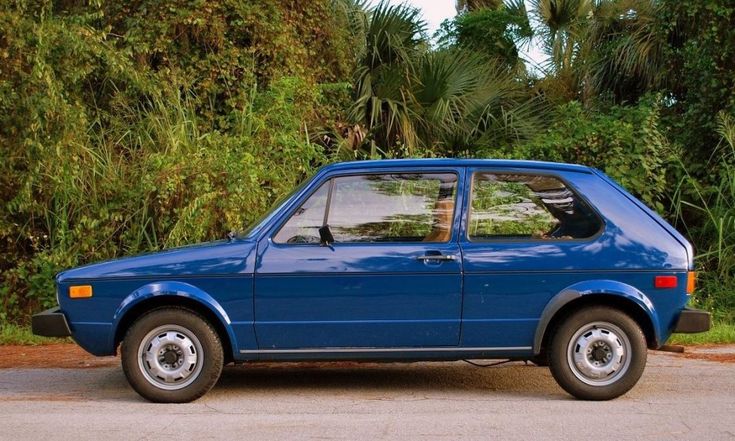
The company pioneered the concept of “hot hatches” with the GTI variant, combining practical design with performance engineering. This approach created an entirely new market segment that competitors rushed to join.
Volkswagen’s technological innovations extended to manufacturing processes as well. Their early adoption of robotics and automation in factories set industry standards for precision and quality control.
In recent decades, Volkswagen has invested heavily in:
- Electric vehicle platforms
- Advanced driver assistance systems
- Digital connectivity features
- Sustainable manufacturing techniques
These initiatives reflect Volkswagen’s understanding that automotive design now encompasses both physical vehicles and the digital experiences they provide.
Corporate Growth and Challenges

Volkswagen’s journey from its troubled beginnings to global dominance has been marked by strategic adaptations to market forces. The company has weathered economic storms while expanding its international footprint through innovative marketing and business strategies.
Economic Booms and Recessions
Volkswagen has navigated numerous economic cycles since its post-war rebirth. In the 1950s and 1960s, the company rode the wave of European economic recovery, establishing itself as a symbol of Germany’s “economic miracle.”
The oil crisis of the 1970s initially threatened Volkswagen’s growth but ultimately benefited the company as consumers sought fuel-efficient alternatives to American gas-guzzlers. The Beetle and Golf models proved particularly successful during this period.
The 2008 global financial crisis presented significant challenges. However, Volkswagen’s diverse product portfolio and strong presence in emerging markets like China helped buffer the impact. The company reported record sales of 6.3 million vehicles in 2008 despite the economic downturn.
More recently, Volkswagen has faced economic uncertainty due to Brexit, trade tensions, and the COVID-19 pandemic. These challenges have pushed the company to accelerate its transition toward electric vehicles and digital services.
Marketing Strategies
Volkswagen’s marketing approaches have evolved dramatically over decades. In the 1960s, the “Think Small” campaign revolutionized advertising by embracing honesty and simplicity—openly acknowledging the Beetle’s unconventional design while turning it into a virtue.
The company pioneered emotional marketing with campaigns that focused on human stories rather than technical specifications. Their “Drivers Wanted” campaign in the 1990s targeted younger drivers seeking affordable European engineering.
Volkswagen has consistently positioned itself at the intersection of quality and accessibility, offering “German engineering” at more attainable price points than luxury competitors. This value proposition has been central to their marketing identity.
Recent marketing efforts have emphasized sustainability and innovation, particularly as the company invests heavily in electric vehicle development. The “ID.” sub-brand represents Volkswagen’s commitment to environmentally conscious transportation solutions.
Global Presence and Power
Volkswagen has transformed from a German manufacturer into a global automotive giant with operations across continents. The company manages 119 production plants worldwide, employing over 670,000 people.
China represents Volkswagen’s largest market, where the company established early joint ventures in the 1980s. This first-mover advantage has secured Volkswagen’s position as the leading foreign automaker in China’s massive automobile market.
The acquisition strategy has been central to Volkswagen’s global expansion. The Volkswagen Group portfolio now includes diverse brands targeting different market segments:
- Mass market: Volkswagen, SEAT, Škoda
- Luxury segment: Audi, Bentley, Lamborghini, Porsche
- Commercial vehicles: MAN, Scania
Despite its global success, Volkswagen has struggled to maintain its reputation as competition intensifies. The 2015 emissions scandal significantly damaged consumer trust, resulting in billions in fines and recalls.
Cultural Impact and Legacy

Volkswagen has shaped automotive culture and German identity far beyond its original intent. Its journey reflects both technological innovation and societal transformation across generations.
Volkswagen in Popular Culture
The Volkswagen Beetle became an iconic symbol that transcended its Nazi origins. In the 1960s, the Beetle emerged as a counterculture favorite in America, appearing prominently in films and music.
Disney’s “Herbie” movies featured a sentient Beetle with racing stripes, cementing the car’s lovable image in global popular culture. The distinctive round shape became instantly recognizable worldwide.
Volkswagen’s advertising also made cultural history. Their honest “Think Small” campaign revolutionized marketing approaches with self-deprecating humor and straightforward messaging.
In Berlin and other major cities, vintage VW vans and Beetles remain popular in artistic communities, appearing in countless photographs, movies, and fashion shoots.
The Company’s Role in Germany’s History
Volkswagen’s evolution mirrors Germany’s own complex journey. Originally conceived as the “German People’s Car” during the Third Reich, it represented Hitler’s failed promise of motorization for average citizens.
After WWII, Volkswagen transformed into a symbol of the German economic miracle. The company’s rise helped rebuild national confidence and international standing.
Volkswagen’s factories became economic engines for regions like Wolfsburg, between Berlin and Munich. The company’s success story helped reshape Germany’s global image from wartime aggressor to engineering powerhouse.
The corporation has faced its dark history, acknowledging its use of Jewish forced labor during the war and establishing compensation funds. This reckoning represents Germany’s broader efforts to confront its Nazi past.
Volkswagen Today

Volkswagen has transformed from its controversial beginnings into a forward-thinking automotive leader. The company now focuses on sustainability, cutting-edge technology, and ambitious plans for the future while maintaining its distinctive design philosophy.
Sustainability Efforts
Volkswagen has committed to environmental goals through its “Way to Zero” program, aiming for carbon neutrality by 2050. The company invested over €35 billion in electric vehicle development between 2020-2025, establishing it as one of the industry’s biggest investors in green technology.
The ID. family of electric vehicles represents the core of this strategy. The ID.4 SUV and ID.3 hatchback feature zero direct emissions and are manufactured in carbon-neutral factories in Zwickau, Germany, and other locations worldwide.
Volkswagen also focuses on sustainable supply chains. The company has implemented rigorous standards for battery production, reducing the carbon footprint of its most carbon-intensive component by partnering with suppliers who use renewable energy.
Technological Advancements
Volkswagen’s MEB platform (Modular Electric Drive Matrix) has revolutionized their design approach, allowing for flexible electric vehicle production across multiple models. This innovative architecture maximizes interior space while maintaining the compact dimensions Volkswagen is known for.
The company’s software subsidiary, CARIAD, develops unified operating systems for future vehicles. Their advanced driver assistance systems continue to evolve toward higher levels of autonomy, with features like Travel Assist offering hands-on automated driving capabilities.
Digital connectivity stands at the forefront of Volkswagen’s tech strategy. Their vehicles now feature over-the-air updates, smartphone integration, and AI-powered voice assistants that continually improve through machine learning.
Future Projections and Plans
By 2030, Volkswagen plans for electric vehicles to represent 70% of its European sales and 50% in the US and China. This ambitious target supports their design philosophy of creating accessible electric mobility for millions.
The company is exploring autonomous driving technologies through partnerships with specialized firms like Argo AI. Their vision includes mobility services beyond traditional car ownership, preparing for shifts in how consumers use vehicles.

Battery technology remains a critical focus, with Volkswagen investing in solid-state batteries that promise greater range and faster charging times. The company is building six battery gigafactories in Europe alone, securing their supply chain for the electric future.
Volkswagen’s design language continues to evolve with concepts like the Trinity project, which aims to redefine how cars are built and sold with radically simplified ordering processes and lifelong software updates.
Notable Landmarks and Associations

Volkswagen’s history intertwines with several significant German landmarks and cultural elements. The company’s roots connect to historical locations that witnessed the rise of Nazi power and later transformed alongside Germany’s post-war identity.
Munich’s Iconic Locations
Munich played a significant role in early Nazi activities before Volkswagen was established. The Beer Hall Putsch of 1923 took place in Munich, marking Hitler’s first attempt to seize power. While not directly connected to Volkswagen’s founding, this event set the stage for the Nazi regime that would later create the company.
The Residenz and Marienplatz represent Munich’s historical center where Nazi rallies and propaganda events occurred. These locations witnessed the spread of ideologies that influenced the creation of the “people’s car” concept.
The Frauenkirche and Altes Rathaus stand as symbols of Munich’s endurance through political transformations, much like Volkswagen itself evolved beyond its origins. The Alte Pinakothek, with its collection of historical paintings, provides context for understanding the artistic propaganda that accompanied industrial projects like Volkswagen.
The Relationship with German Beer History
Volkswagen’s founding coincided with the Nazi regime’s manipulation of German cultural traditions, including beer culture. Local breweries often served as gathering places where the “people’s car” concept was promoted to workers.
The Nazi vision for Volkswagen was presented at various beer halls, connecting the industrial project to traditional German social spaces. Hitler himself announced plans for the Volkswagen at rallies where beer was served, making these beverages part of the company’s promotional history.
After WWII, Volkswagen’s transformation into a global brand paralleled the international recognition of German beer culture. Both industries represented Germany’s economic revival and shift from nationalism to global commerce.
St. Michael’s Church in Wolfsburg, near the Volkswagen factory foundation stone laid in 1938, stands as a reminder of how the company’s history spans from dark origins to peacetime production.
Frequently Asked Questions

Volkswagen’s complex history spans from its Nazi-era beginnings to its transformation into one of the world’s largest automakers. The company’s journey reflects broader historical shifts in Germany and global automotive development.
What are the origins of Volkswagen and its connections to the Nazi regime?
Volkswagen was originally conceived as the “people’s car” (Volkswagen in German) during the Third Reich. The company was established as part of an effort to create an affordable car for the German people.
Adolf Hitler personally championed the Volkswagen project and embraced Ferdinand Porsche’s car design. Hitler’s involvement wasn’t merely symbolic—he attended the foundation laying ceremony for the Volkswagen plant.
The Deutsche Arbeitsfront (German Labor Front) officially founded the company in 1937 under Nazi oversight. The original Volkswagen Beetle was designed to fulfill Hitler’s vision of motorizing Germany with a car that ordinary families could afford.
What role did Volkswagen play during World War II?
During World War II, Volkswagen’s civilian car production was largely halted as the company was integrated into the Nazi war economy. The factory shifted to producing military vehicles and equipment.
Volkswagen manufactured military vehicles including the Kübelwagen (a jeep-like vehicle) and Schwimmwagen (an amphibious vehicle). These vehicles were vital to the German military operations throughout the war.
The company extensively used forced labor during this period, including Jewish prisoners and other concentration camp inmates. Thousands of forced laborers worked in harsh conditions at the Volkswagen plant near what is now Wolfsburg.
How did Volkswagen evolve after the end of World War II?
After Germany’s defeat, the Volkswagen factory fell under British control in the occupation zone. British Army Major Ivan Hirst played a crucial role in restarting production at the damaged factory.
The company began producing the Volkswagen Beetle (then called Type 1) for civilian use, which helped address transportation needs in post-war Germany. The car that had been a failed Nazi prestige project became a national icon in post-war Germany.
In 1949, Volkswagen was transferred to the newly formed Federal Republic of Germany (West Germany). Under the leadership of Heinz Nordhoff, the company focused on refining the Beetle and expanding production.
Can you provide a brief history of Volkswagen’s global expansion?
Volkswagen began exporting vehicles to neighboring European countries in the late 1940s. By the 1950s, the company established its first major overseas presence with a manufacturing plant in Brazil.
The Beetle became an unexpected hit in the United States during the 1960s, symbolizing a counterculture alternative to large American cars. This success gave Volkswagen its first major foothold in the crucial American market.
In subsequent decades, Volkswagen expanded through both organic growth and acquisitions. The company acquired Auto Union (later Audi) in the 1960s, SEAT in the 1980s, Škoda in the 1990s, and luxury brands like Bentley, Lamborghini, and Bugatti in the late 1990s.
What is the significance of Volkswagen’s vehicles in the context of wartime production?
During World War II, Volkswagen’s production facilities were converted to manufacture military equipment instead of the people’s car that had been promised to German citizens. This conversion reflected the Nazi regime’s prioritization of the war effort.
The Kübelwagen, based on the Beetle’s chassis, became one of Germany’s most versatile military vehicles. Approximately 50,000 of these vehicles were produced during the war.
After the war, the irony of Volkswagen’s story emerged – a car designed as a Nazi propaganda tool became a symbol of Germany’s economic recovery and later a global icon of peace and counterculture in the 1960s.
Has the ownership structure of Volkswagen changed since its inception, particularly in relation to government ownership?
After World War II, Volkswagen was briefly under British control before being transferred to the German federal government and the state of Lower Saxony. This marked a significant change from its Nazi-era ownership by the German Labor Front.
In 1960, the German federal government sold 60% of Volkswagen’s shares to the public, transforming it into a partially privatized company. This public offering represented one of Germany’s first steps toward creating a “people’s capitalism.”
Today, Porsche SE (owned by the Porsche and Piëch families) holds the largest stake in Volkswagen Group. The state of Lower Saxony maintains a significant minority stake with special voting rights, ensuring continued public influence in the company’s governance.
